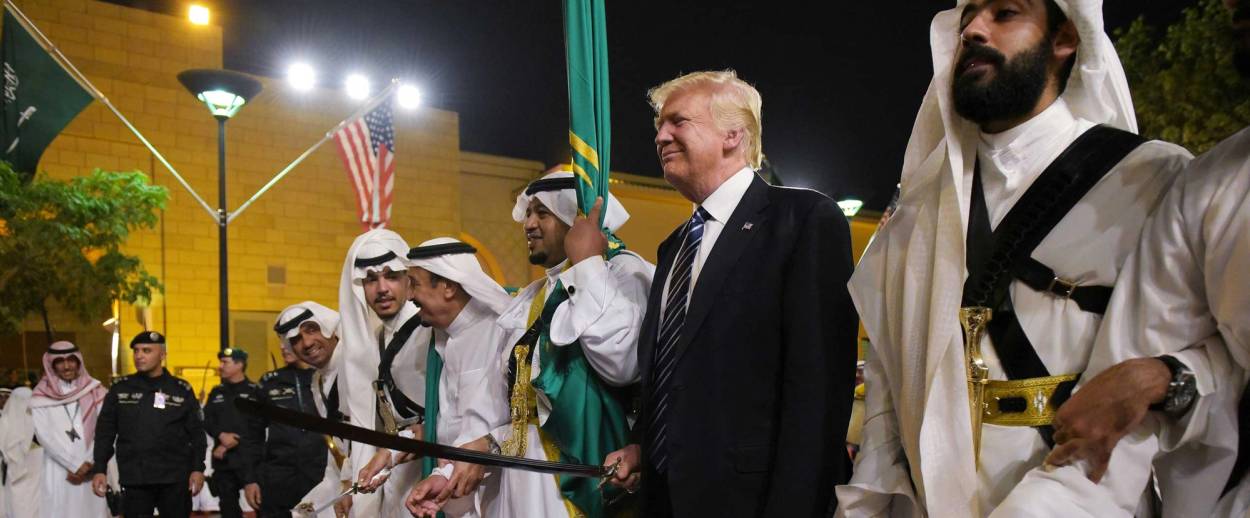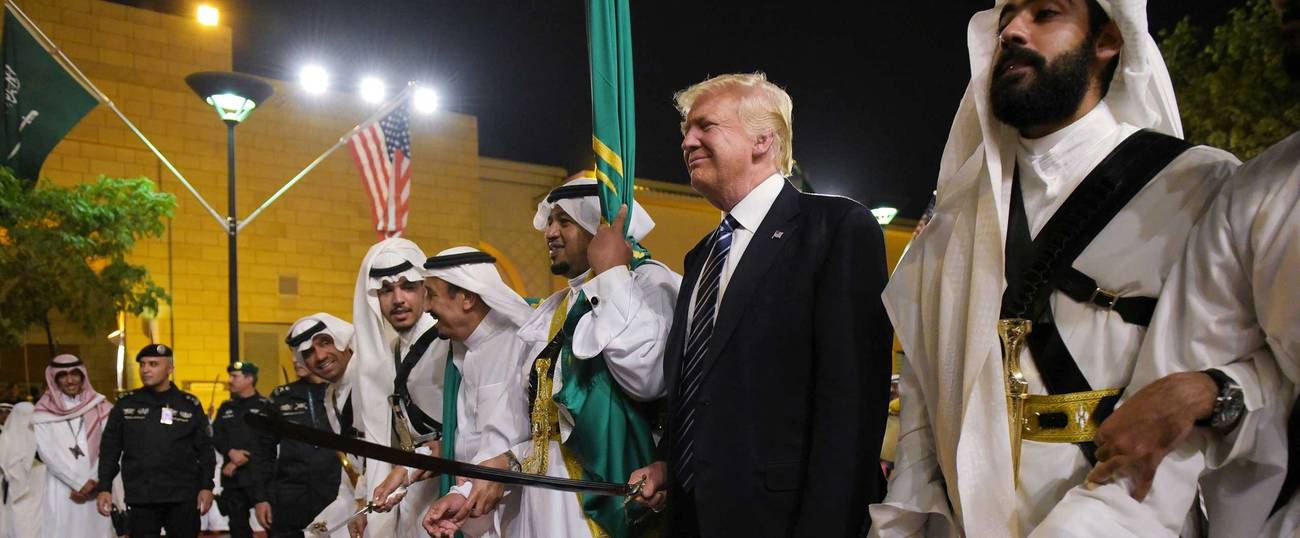Trump’s Middle East Trip Was a Big, Surprising Success—and the Iranian Regime is Nervous
How the president’s photo-op diplomacy plays in Riyadh, Tehran, Beirut, Jerusalem, and back home in Trumpland




“I want to tell you,” Israeli Prime Minister Benjamin Netanyahu said to President Donald Trump during a joint press conference Monday, “how much we appreciate the reassertion of American leadership in the Middle East.”
So how is Trump’s first foreign trip as president playing out? Suddenly, the scandal-mired President seems like a plausible world leader. He is certainly a more welcome guest in the capitols of America’s traditional allies than his predecessor, President Barack Obama. In addition to enjoying the show, viewers at home—the ones who voted for Trump last fall—likely appreciate the $110 billion arms deal Trump struck with Saudi Arabia. With another $350 billion to come over the next decade, those contracts will certainly help put assembly-line Americans back to work.
Trump’s speech before a worldwide audience about terrorism and Islam was a useful initiative that will also put some of the dozens of Muslim leaders who attended the speech on notice. Acknowledging that Jerusalem is in Israel is a break with strict Obama policy. Trump became the first sitting U.S. president to visit the Western Wall.
But having spent nearly a decade living in Cairo and Beirut, and traveling throughout the Middle East, I can easily imagine the spin that the region’s intellectuals are putting on the trip as they sit in their coffee houses and smoke Gitanes:
Habibi, the Saudis just paid the Americans nearly half a trillion dollars to keep them safe from Iran, right? But Iran was nothing before Obama built them up with $150 billion. It’s only because Obama kept paying Iran—first to stay in negotiations over the nuclear program and then as a reward for signing the deal—that Iran was empowered. Obama and his pallets of cash helped Iran extend its reach from the Persian Gulf to the eastern Mediterranean.
Iran thought that it got the better of the Americans, but the Americans played them for suckers! The CIA had something up their sleeves the whole time! They just wanted the Arabs to pay even more to defend them from Iran. So the Americans created this Iranian bogeyman and then they sent the Arabs a bill to make the Iran problem go away. They drove up the price!
It’s a protection racket, don’t you see? And the Americans cleared nearly $300 billion. Oh man, you can be sure Trump and Netanyahu are laughing it up in Jerusalem. Very clever, those Americans!
No, of course it wasn’t really a CIA shakedown orchestrated over two presidencies. And yet Trump’s maiden foreign presidential venture, or at least the first two stops, is indeed all about the new Administration’s determined recalibration of American Middle East policy after eight years of Obama’s adventurism—especially regarding Iran.
Trump made his intentions toward Iran pretty clear in his Riyadh speech. “For decades, Iran has fueled the fires of sectarian conflict and terror,” said Trump. “It is a government that speaks openly of mass murder, vowing the destruction of Israel, death to America, and ruin for many leaders and nations in this room.”
The visuals from Riyadh and Jerusalem were even more important than the speeches. After all, you can reassure your allies on the phone—to scare your shared adversaries, you create a photo album and broadcast it on Facebook and Twitter.
Here’s the president of the United States being celebrated in Saudi Arabia with a sword dance. And clearly, this is not the secretary of state’s first ardha. As a famous oil man who is always welcome to visit the global swing producer of oil, Rex Tillerson knows all the steps already. See him dancing with Wilbur Ross? The Americans and Saudis are like family.
And look—the president of the United States actually has Jews in his family. Here is a picture of his daughter praying at the Western Wall. Here is a picture of the president also at the Western wall wearing a kippah. And oh, look—Trump has made it his status picture on Twitter.
The Iranian regime isn’t very happy. Trump’s photo ops stole the entire foreign policy news cycle from an Iranian regime that wanted a few days of good press after its rigged presidential elections last Friday. The message that Tehran received from the presidential pomp and circumstance in Riyadh is that things are different now.
The Obama administration moved quietly behind the scenes to reorient American policy toward Iran, while it pulled the rug out from under traditional American allies. Among other things, the Obama White House leaked Israeli strikes against Hezbollah convoys, it coordinated operations with Iranian-backed militias in Iraq, and it stood aside as Bashar al-Assad waged a genocidal campaign in Syria so as not to affect the prospects of the nuclear deal with Iran.
The Iranians know how much they owe the Obama administration—whether it was air support for Qassem Soleimani in Tikrit, legitimization of Iranian interests in Yemen, deterring Israel from striking their nuclear facilities, turning a blind eye as they built a highway from Tehran to Baghdad to Damascus to Beirut.
Now the Americans are dancing with the Arabs and praying with the Jews, and Iran is on its own again.
***
You can help support Tablet’s unique brand of Jewish journalism. Click here to donate today.
Lee Smith is the author of The Permanent Coup: How Enemies Foreign and Domestic Targeted the American President (2020).